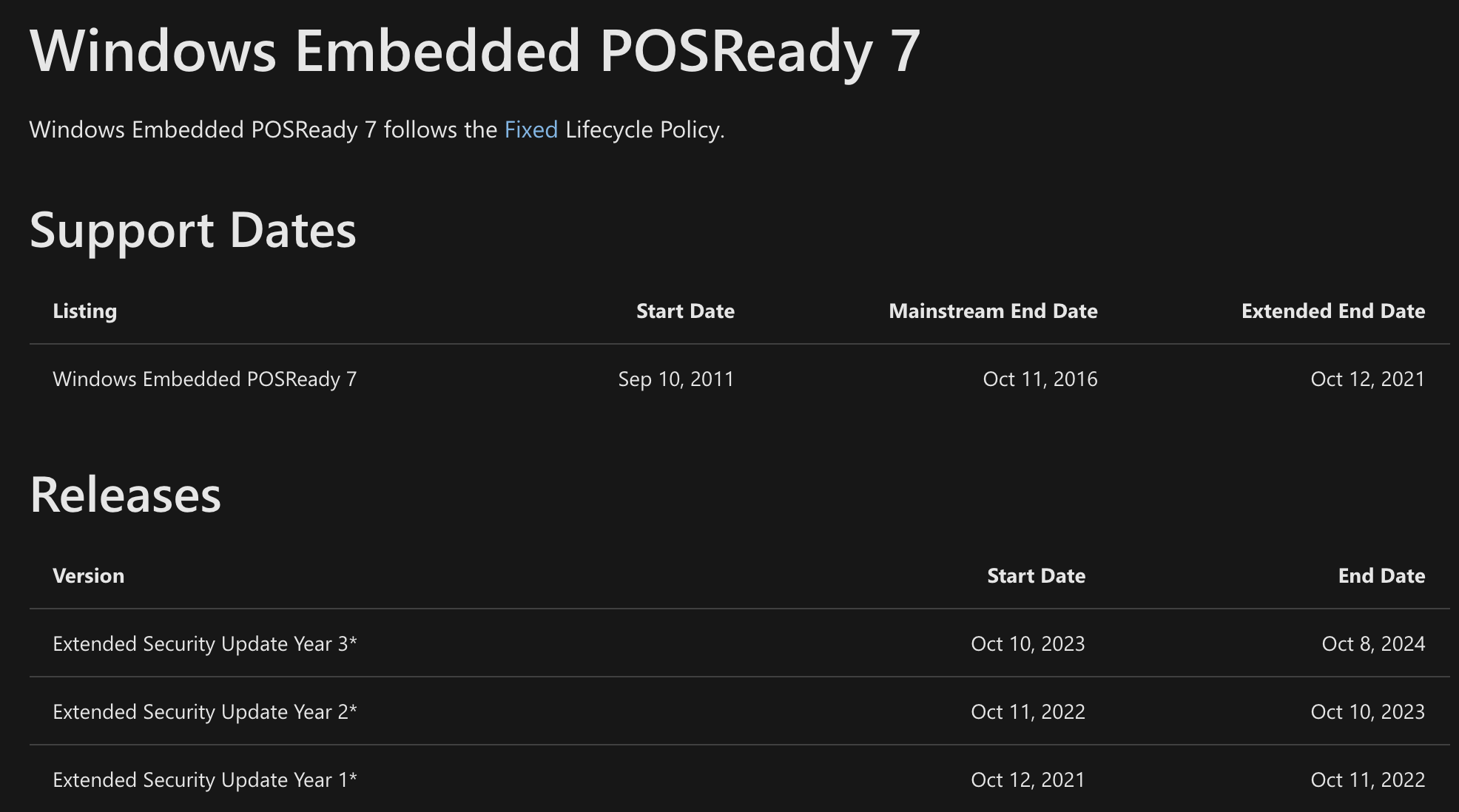End of support leaves deployed POSReady 7 devices unprotected. Learn about available options.
Support for Windows Embedded POSReady 7 operating system will end on October 12, 2021. Millions of point of sale/service (POS) devices running on Windows POSReady 7 will be without support and no longer receive any security updates, leaving devices unprotected and vulnerable. Customers are seeking guidance on the options available and cost-effective upgrade choices.
The retail environment has many POS terminals, including self-check-out, digital signage, kiosks, and industrialized PCs/ tablets, running POS software using Microsoft’s Windows Embedded POSReady 7 operating system. Support expiration has significant implications for these devices, affecting revenue collection and adherence to PCI-DSS compliance requirements. Without access to the latest updates and patches, retailers have exposure to higher security and compliance risks.
Arrow experts can support partners and retailers as they seek options to overcome this threat. Extended Support Update (ESU), upgrading existing devices to a Windows 10 based OS, or refreshing hardware are all possibilities. This blog outlines the pros and cons of each option.
Option #1: Seek support from the original equipment manufacturers (OEMs) of the POS device
OEMs may offer operating system upgrades to enable customers to continue using older hardware. However, most OEMs prefer to retire older devices in favor of brand-new units, including Windows 10 IoT Enterprise LTSC.
Option 1 summary:
- Advantage: Easy process that involves purchasing new devices with the latest hardware and software installed.
- Disadvantage: Purchasing new POS devices can be an expensive proposition.
Option #2: Purchase a Volume License Upgrade for Windows 10 Enterprise LTSC
Microsoft offers upgrades to the Windows 10 Enterprise LTSC version via the volume licensing channel for end-users needing to upgrade their POS devices. Available for purchase as Open Volume licenses from any authorized distributor, the upgrade (Windows 10 IoT Enterprise LTSC Volume image) can easily be obtained. The upgrade license (part number: KW4-00190) has a list price of $295, which is almost as expensive as buying a new POS device.
Option 2 summary:
- Advantage: The process to purchase is simple.
- Disadvantage: Expensive option as the license costs as much as a new POS device.
Option #3: Extend the Security Updates for POSReady 7 via the ESU license purchase
Microsoft now offers an option to extend the enterprise security updates (ESU) for Windows POSReady 7 (POS7) annually, for a maximum of three years. This option allows OEMs to extend security protection while they migrate to the latest Windows operating system. End customers who want to use this option will need to contact Arrow and discuss the particular agreement. However, the ESU program is expensive and priced to encourage OEMs to upgrade to Windows 10 instead of extending Windows 7. The first year, which runs from Oct 2021 to Oct 2022, requires purchasing 100 hours of support priced over $22,000, and the POS7 ESU licenses are $50 per device. The pricing then doubles each year with a maximum of three years.
Option 3 summary:
- Advantage: ESU ensures existing field devices are protected.
- Disadvantage: Expensive option requiring the mandatory purchase of 100 hours of support and licensing costs doubling every year.
Option #4: Become an indirect OEM of the POS device and purchase OEM IoT LTSC licenses
This upgrade path involves becoming an OEM and managing their POS devices for customers with significant cost considerations. In this option, retailers work directly with Arrow regarding Microsoft legal agreements and purchase a full OEM IoT license for Windows 10 IoT Enterprise LTSC 2019 or the upcoming LTSC 2021. This option is very affordable compared to the volume license upgrade. With this option, installing and testing the new OS on the POS device can be performed at no costs until ready for a production license. Part numbers are available in this table:
|
Part # |
Description |
|
MUT-00013-1P |
Win 10 IoT Ent 2019 LTSC ESD OEI “HIGH END” ePKEA (Core i7, Core i9, Xeon) |
|
MUU-00005-1P |
Win 10 IoT Ent 2019 LTSC ESD OEI “VALUE” ePKEA (Core i3/i5/Some Celeron) |
|
MUV-00005-1P |
Win 10 IoT Ent 2019 LTSC ESD OEI “ENTRY” ePKEA (Atom/Some Celeron) |
Option 4 summary:
- Advantage: Least expensive option
- Disadvantage: End-customer (retailer) is responsible for supporting the Windows 10 IoT
Contact Arrow at msembedded@arrow.com for pricing, help getting started, or additional information on the options outlined above.
- Discover more about Microsoft’s top-running parts including end of life dates, end of support dates, part numbers, part names and COA types. Download Now
- POSReady 7 End of Support video






